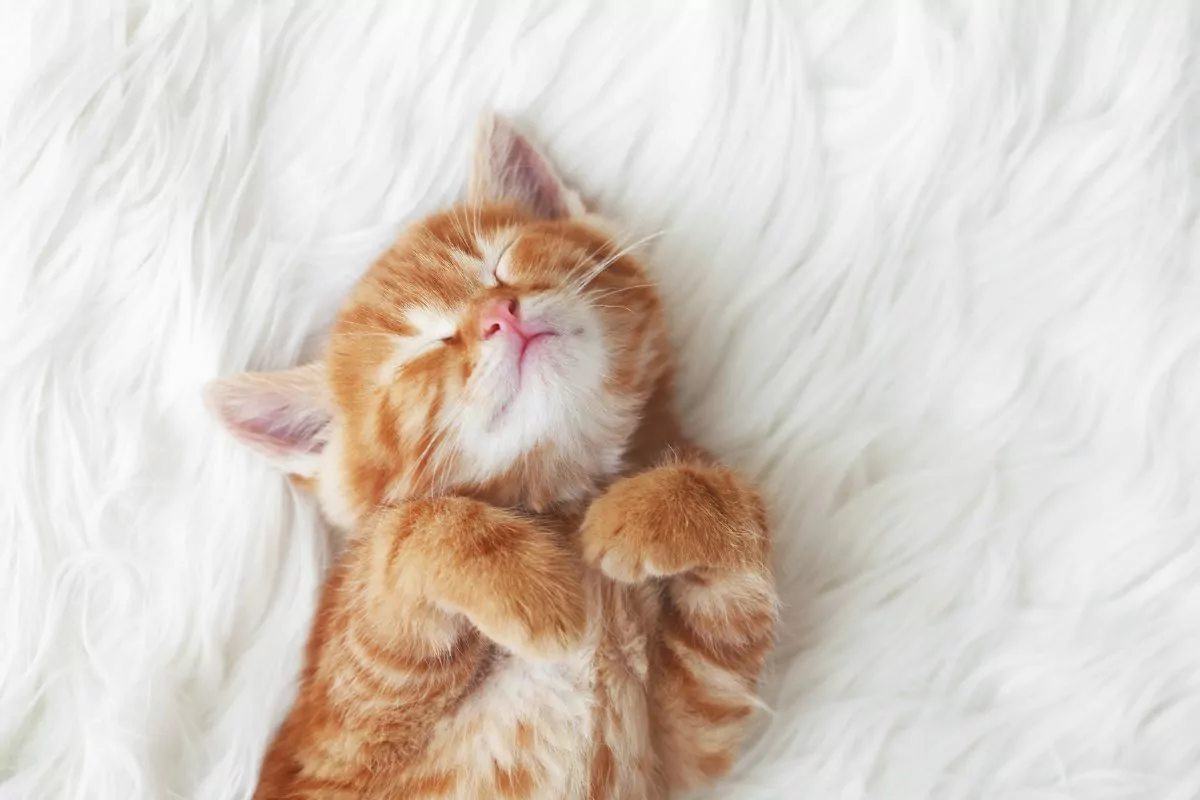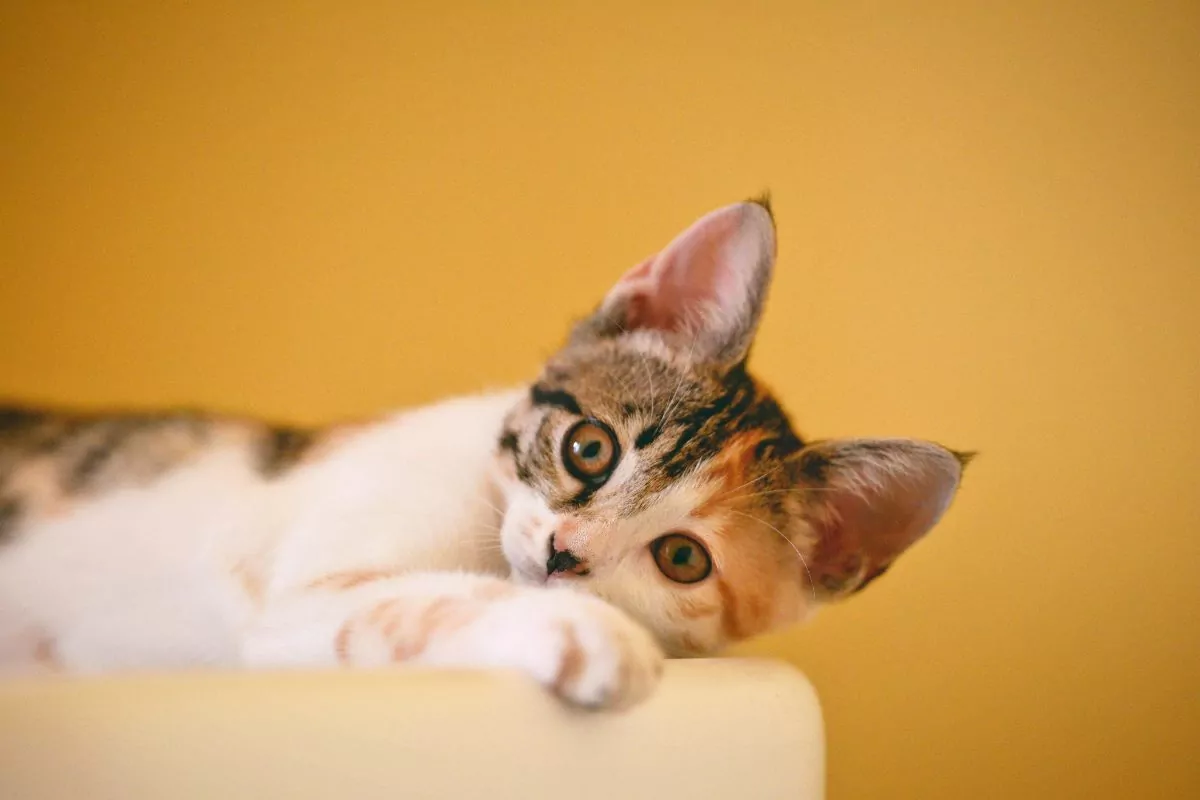What is Anemia in Cats?
Anemia occurs when the circulatory system’s concentration of red blood cells is lower than expected. Vets consider anemia in cats to be a severe condition. A cat’s standard red blood cell concentration of 25-45%.
Vets refer to red blood cell concentration as packed cell volume (PCV) or hematocrit. A PCV value lower than 25% indicates that a cat is anemic.

Can You Treat Feline Anemia Naturally?
The bone marrow produces red blood cells (RBCs), which enter the circulation once they mature. The RBC’s primary responsibility is transporting oxygen and nutrients throughout the body.
The lifespan of an RBC is around seventy to eighty days, but if they become compromised, it takes approximately two weeks for the body to replace them.
There are several causes for anemia with various medical management options, including holistic alternatives for owners who wonder how to treat anemia in cats naturally.
What are the Signs and Symptoms?
The red blood cells produce the pink color owners observe when they look at the color of their pet’s gums. Changes in the gum color can also be due to decreased blood pressure, but an ashen pink or white gum color is a clear indicator of a severe problem in the circulatory system.
When vets investigate anemia in cats, symptoms that owners may notice will include the following:
- They have decreased energy levels.
- They show reduced interest in their environment, exercise, or play activities.
- Increased intervals of sleep.
- Changes occur in the color of a cat’s gums, the white portion of its eye (sclera), or eyelids. The color changes associated with anemia range from pale pink to white, but yellow is also a sign of anemia in later stages due to the breakdown of old red blood cells.
- If there are insufficient RBCs, the body cannot get enough oxygen, and some cats will start to pant, breathe with an open mouth and develop an increased heart rate.
- Vomiting and dark black pasty stools also occur in end-stage anemia cases.
The Causes of Anemia in Cats
The causes of anemia depend on which health condition leads to decreased red blood cells.
The three predominant conditions include the following:
- The destruction of red blood cells.
- The loss of red blood cells.
- The failure to produce new red blood cells.
The Destruction of Red Blood Cells
There are several reasons why RBCs would undergo destruction in the circulatory system. This destruction breaks RBCs down before the body can replenish the reserve unless a vet diagnoses and treats the cause.
Infectious causes of RBC destruction result from the body’s immune system recognizing the pathogens inside the cell and then targeting it for destruction. Some parasites also result in red blood cell rupture after replication, thereby releasing more parasites into circulation.
The leading infectious causes in cats include Mycoplasma haemofelis, Mycoplasma haemominutum, Babesia felis, and Cytauxzoon felis.
A cat’s immune system can destroy RBCs in the presence of an autoimmune disease. The body attacks its own cells, mistaking them for foreign pathogens, leading to anemia. Immune-Mediated Hemolytic Anemia in cats is a condition with severe health implications, and it is not always easy to treat.
Cancer, Feline Leukemia Virus, and certain chemicals or toxins have the potential to trigger an autoimmune reaction.
Toxins that cause anemia in cats include garlic, onions, zinc, acetaminophen, or paracetamol. These toxins cause oxidative damage to RBCs that result in their rupture, often leading to dire complications for the heart, lungs, and kidneys—the oxidative damage results in Heinz Body anemia in cats.
The Loss of Red Blood Cells
Blood loss causes anemia by decreasing blood volume in the circulatory system. The most common causes of blood loss are trauma resulting in significant hemorrhage, clotting disorders, internal or external parasite infections, and cancer.
Flea anemia in cats is the most prevalent form of anemia in kittens. Ticks and worms such as hookworm parasitize the blood of cats, and severe infestations result in significantly decreased RBC concentrations.

Failure to Produce Red Blood Cells
A red blood cell’s life span is only two weeks, and if the body cannot produce adequate amounts of blood to replenish the expired cells, then drastic anemia sets in. This anemia is severe and needs veterinary attention as soon as possible.
Factors that affect red blood cell production include chronic disease, bone marrow pathology, cancer, or toxic chemicals.
The Different Types of Feline Anemia
Clinicians refer to the two types of anemia as regenerative or non-regenerative. When comparing regenerative vs. non-regenerative anemia, the most discernible difference is the prognosis. Most non-regenerative anemias carry a poor prognosis.
Regenerative anemia indicates that the body can replenish the lost red blood cells through erythropoiesis. The cells may show signs of premature cells, known as reticulocytes, being pushed out of the marrow due to increased demand. A high reticulocyte count indicates an appropriate response to combat lost red blood cells.
Most regenerative anemias occur due to either acute or chronic blood loss and will improve if treated appropriately.
Non-regenerative anemia in cats occurs when there is no appropriate bone marrow response to the decreased level of red blood cells. If the bone marrow is compromised or the body cannot produce adequate messengers to trigger erythropoiesis, the body cannot correct the anemia state.
The kidneys produce erythropoietin, the hormone that triggers blood production in the bone marrow. If the kidneys become compromised due to renal insufficiency or acute kidney injury, then RBC production decreases significantly.
Some cancers also affect the bone marrow; if there is no bone marrow response, vets may consider aplastic anemia in cats.
What is the Average Recovery Time?
When treating anemia in cats, recovery time depends on severity and cause. Cats with advanced anemia require hospitalization, extensive tests, and a blood transfusion. Most hospital stays range from two to seven days. The sooner an anemic cat gets diagnosed, the better the outcome.
How is Anemia in Cats Tested and Diagnosed?
There are several causes of anemia in cats, so a vet will need to perform several tests to try and determine the underlying pathology. The primary test is the measurement of red blood cell concentration with a complete blood count to quantify the hematocrit or PCV. A vet considers the cat anemic if this value is below 25 percent.
The following test help to investigate the cause of anemia:
- Physical examination and clinical history to consider external parasites or possible toxin exposure.
- Blood smear examination by a pathologist.
- Serum chemistry, electrolyte balances, and urine analysis.
- Fecal flotation to rule out internal parasites.
- Diagnostic imaging, such as radiographs or ultrasounds, checks for active bleeding or masses.
- Feline Leukemia Virus and Feline Immunodeficiency Virus tests.
- Bone marrow biopsy.
The attending vet determines the number of tests performed depending on the results of the minimum medical database and the clinical symptoms.
How Do Vets Cure the Condition?
When faced with a complex health condition, owners may wonder, “How do you treat anemia in cats?”
If the anemia is life-threatening, vets may recommend a blood transfusion. Cats have two blood types, A and B, and it is essential to get the right blood type before a transfusion to avoid an adverse immune reaction. It is vital to draw samples before the transfusion to be able to diagnose the possible causes of the anemia.
Once stable, the vet will start to manage the symptoms, and once the vet makes a diagnosis, they can implement a treatment plan. The treatment depends on the inciting cause, but most non-trauma-related protocols include steroids, antibiotics, gastroprotectant drugs, and possible internal or external parasite control.
If trauma is the cause, cat anemia treatment requires stopping the hemorrhage with either surgery or a pressure bandage. Blood transfusions, fluid therapy, and oxygen administration occur if the patient is severely compromised or in hypovolemic shock.
Chronic kidney disease management depends on the stage of renal impairment, but most treatments include diet supplementation, blood pressure medication, and gastroprotectants. The use of drugs to simulate erythropoietin may help improve the anemia temporarily.
Due to the serious nature of the condition, most vets do not advocate holistic treatment for anemia in cats.

What Happens if Feline Anemia is Left Untreated?
Most cats will succumb to the secondary complications of anemia if an owner does not take action and treat the condition.
The Prognosis and Outcome
Each anemia case outcome depends on an individual’s ability to respond to treatment. Cats have a good prognosis if the condition is caught early and treated effectively.
Cats with severe anemia caused by cancer, autoimmune diseases, or toxins have a more guarded prognosis. The potential for extended, frequent hospital stays and chronic medications is a big reality for cats with chronic anemia.
Key Takeaways
Anemia in cats needs immediate veterinary care as early intervention and treatment will vastly improve the outcome of the condition if clinicians can treat it effectively.
